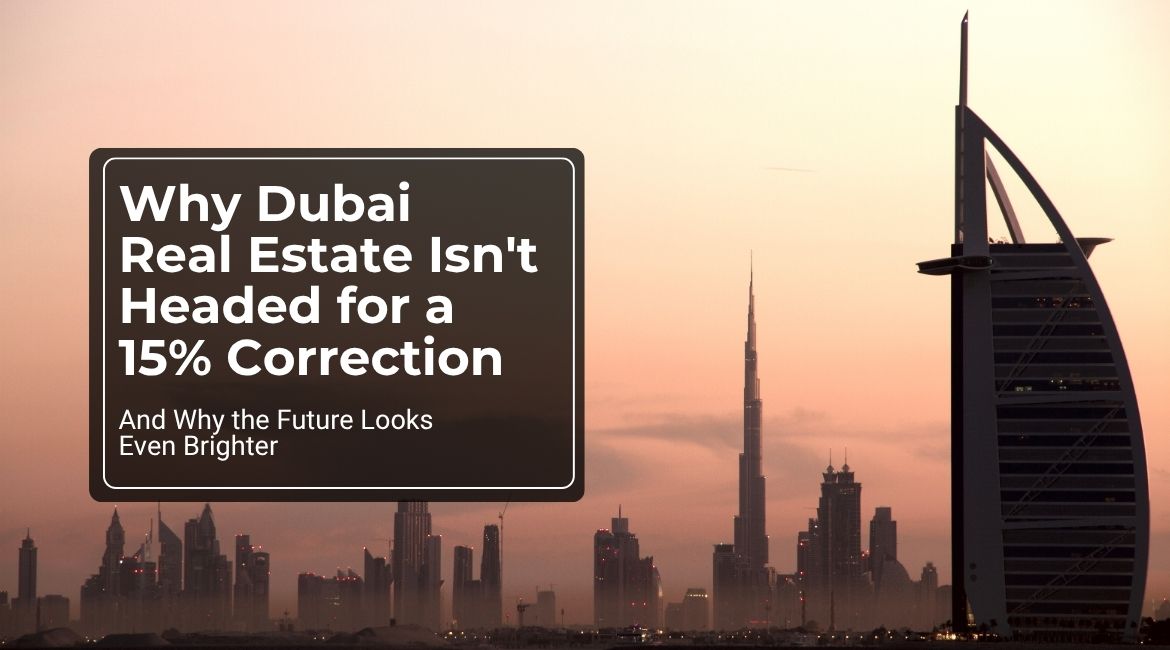Why Dubai Real Estate Isn’t Headed for a 15% Correction — And Why the Future Looks Even Brighter


Lately, there’s been growing chatter about a potential 15% correction in Dubai’s real estate market, triggered in part by projections from the Fitch report. It’s understandable why such headlines raise eyebrows, especially among investors and industry professionals. But headlines aren’t always the full story.
At Fluence Properties, we live and breathe this market daily. And from where we stand, the notion of a 15% drop doesn’t align with what’s actually happening on the ground. Let’s break it down.
1. Population Growth Is Far Outpacing Forecasts
Fitch assumes a 5% annual population growth through 2027. That might have been reasonable a year ago—but it’s already obsolete. In 2023, Dubai’s population grew by 5.93%, and in just Q1 of 2024, over 100,000 new residents arrived. At this pace, we’re tracking toward 10% annual growth by 2025.
This is not hypothetical. It’s a demographic trend unfolding in real time.
2. Supply Projections Are Overblown
Yes, over 200,000 units are “scheduled” for handover by 2027. But anyone who knows this market understands that completion rates rarely match registration figures. Historically, only 30–40% of registered units are actually delivered on time.
So, while 206,000 units might be on paper, the reality could be closer to 100,000 units—or less—actually hitting the market. Meanwhile, Dubai continues to add 250,000 new residents annually. That’s a serious supply-demand imbalance—and it favors price strength, not weakness.
3. A Surge in Real Transactions, Not Speculation
Since March 1st this year, during a time of tariff changes and global uncertainty, Dubai has averaged:
1,000+ transactions per day
AED 3.5 billion in daily transaction value
That’s up from 856 daily transactions and AED 2.88 billion in 2024—already a record-breaking year. That’s 19% growth in volume and 22% in value.
If this is what a “slowdown” looks like, most markets would love to have it.
4. Structural Growth, Not a Speculative Bubble
Dubai isn’t just selling homes—it’s building a future. Consider the facts:
A 260 million passenger-capacity airport is in development.
Trade corridors are expanding.
Dubai’s GDP is on track to double.
Long-term planning includes a 70% population increase over the coming years.
This is structural, strategic expansion—not frothy market speculation.
5. Fundamentals Supporting Continued Growth
Dubai’s real estate strength is underpinned by a range of solid fundamentals:
End-user demand dominates – Most buyers are residents, not short-term flippers.
Rent-to-own migration – Soaring rents are nudging tenants into ownership.
Golden Visas and residency programs – These are making long-term settlement easier and more attractive.
High rental yields – Among the best in the world, drawing investor interest.
Global capital inflows – Dubai remains a top pick for tax efficiency, safety, and asset protection.
Developer oversight – Escrow laws and strict building regulations prevent overbuilding.
Luxury market boom – High-end properties are seeing record-breaking cash deals.
Currency advantage – AED’s strength vs. weaker home currencies makes it appealing for foreign buyers.
Final Word: Know the Market, Not the Headlines
This is a call to brokers, developers, and advisors alike: Don’t be swayed by attention-grabbing forecasts. Use real data. Educate your clients. The real risk isn’t a market correction—it’s missing out on compounding value.
For investors waiting on the sidelines, consider this: in six months, you may be paying 12–15% more for the same asset.
Dubai real estate isn’t just resilient. It’s thriving. At Fluence Properties, we’re here to guide our clients with transparency, insight, and unwavering commitment.
The future isn’t uncertain—it’s unfolding. And Dubai is leading the way.